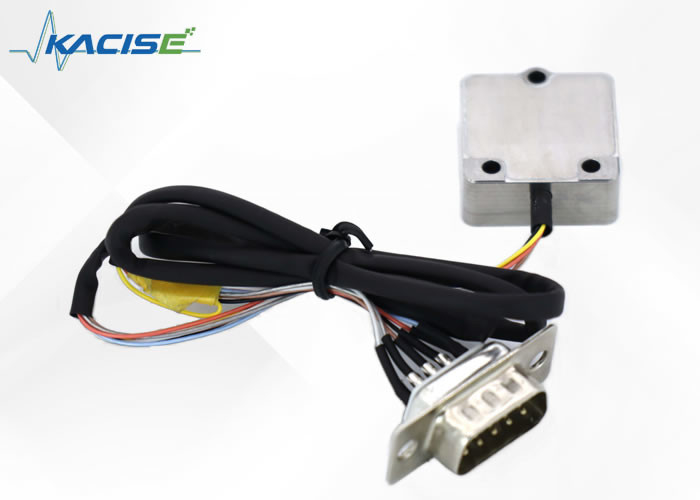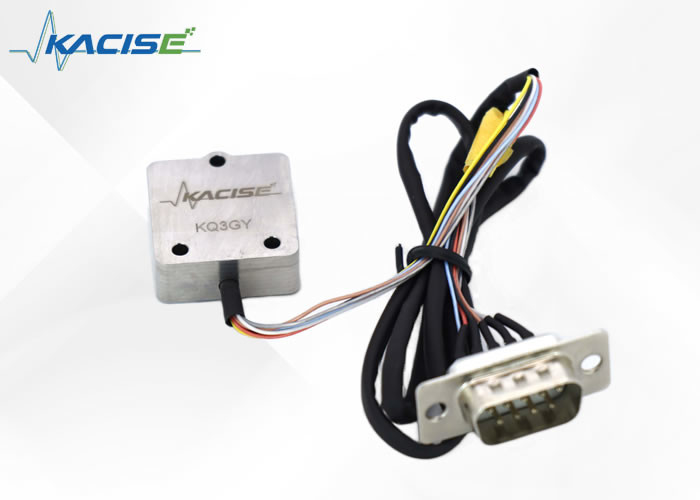Product Description:
The KQ3GY gyroscope is developed using quartz MEMS technology. It has the capability to sense the angular velocities of multiple axes that are configured according to customer needs. The digital information obtained can then be output through the serial port.
MEMS, which stands for micro-electro-mechanical systems, is a micro-device or system that integrates various components such as micro-sensors, micro-actuators, micro-mechanical structures, signal processing and control circuits, high-performance electronic devices, interfaces, and communication technologies. It is an independent intelligent system that can be mass-produced and made to have a size of a few millimeters or even smaller. Typically, the internal structures of MEMS are in the order of microns or even nanometers.
MEMS technology is widely used in various applications, and common products include MEMS accelerometers, MEMS optical sensors, MEMS pressure sensors, MEMS gyroscopes, MEMS humidity sensors, MEMS gas sensors, and their integration products.
Features:
● Large-scale production
● Short startup time
● Wide operating temperature range
● Low power consumption
● High reliability
● Small size and light weight
● Serial output
Technical Parameters:
| Parameter |
KQ3Gy |
| Power Requirements |
| Input Voltage |
5±0.2 Vdc |
| Input Current |
< 50 mA |
| Performance |
| Measurement range |
±100 |
| Bias |
≤0.03 |
| Bias stability |
≤20 |
| Bias repeatability |
≤20 |
| Scale factor nonlinearity |
≤200 |
| random walk |
≤0.25 |
| Threshold |
≤0.005 |
| Bandwidth |
≥140 |
| Acceleration correlation |
≤0.01 |
| Cross coupling |
≤1 |
| Environments |
| Working temperature |
-40℃~+65℃ |
| Random vibration |
6.06g rms |
Dimensions:
Unit:mm

Applications:
Airborne Instrument Measurement
One of the crucial components of aviation is airborne instrument measurement. This refers to the usage of instruments that gather and analyze data while the aircraft is in flight. This data could include things like altitude, airspeed, engine performance, and many other factors. It is essential for pilots and engineers to have accurate and reliable data while the aircraft is in operation.
Robot
In recent years, robotics have become a vital part of aviation technology. These machines can be used for a variety of tasks, such as performing maintenance on aircraft or even as part of the control system for unmanned aerial vehicles (UAVs). Robots can be designed to operate in extreme conditions, such as in space or in hazardous areas like airports during emergency situations.
Automated Testing
Automated testing is another vital area of aviation technology. This involves using specialized software to run a series of tests on aircraft systems to ensure they are working properly. Automated testing has become increasingly important as aircraft have become more complex, and it is essential to be able to quickly and accurately identify any issues that may arise with the aircraft's systems.
Attitude Reference System
The attitude reference system is a crucial component of an aircraft's control system. This system provides pilots with information on the aircraft's orientation and movement. This helps the pilot to keep the aircraft stable and on course during flight. The development of advanced attitude reference systems has greatly improved the safety and efficiency of air travel.
Control System
The control system is an essential part of any aircraft. It is responsible for regulating the aircraft's movement and ensuring that it remains stable in flight. The control system includes various components such as the attitude reference system, flight control surfaces, and the engines. With the advancement of technology, control systems have become increasingly sophisticated, leading to improved safety and efficiency in air travel.
Flight Test
Flight testing is a critical aspect of aviation technology. This involves testing aircraft in real-world flight conditions to ensure that they meet safety and performance standards. Flight testing is typically conducted during the development of a new aircraft, but it can also be used to test modifications to existing aircraft. It is a crucial step in ensuring that the aircraft is safe and reliable for commercial use.
Platform Stability
Platform stability refers to the ability of an aircraft to remain stable in flight. This is essential for ensuring a smooth and safe flight experience for passengers and crew. Stability can be affected by various factors such as wind, turbulence, and changes in altitude. The development of advanced control systems and attitude reference systems has greatly improved platform stability, making air travel safer and more comfortable for everyone.
Support and Services:
Our Electronic Gyroscope Sensor is designed to provide precise motion sensing in a variety of applications. Our product technical support and services are dedicated to ensuring that you can integrate and use our gyroscope sensor effectively in your projects.
Technical Support:
- Comprehensive online documentation: Access detailed product specifications, integration guides, and troubleshooting articles to assist you with any technical queries regarding our Electronic Gyroscope Sensor.
Services:
- Email support: Reach out to our dedicated support team for personalized assistance with any technical issues you may encounter.
We are committed to providing you with the support you need to utilize our Electronic Gyroscope Sensor to its fullest potential.
Packing and Shipping:
Product Packaging:
The electronic gyroscope sensor product will be packaged in a sturdy cardboard box to ensure safe transportation. The product will be securely placed in the center of the box with ample cushioning material to prevent any damage during shipping. The box will also include a user manual and any necessary cables or accessories.
Shipping:
The product will be shipped through a reliable courier service. The shipping cost will be calculated based on the destination and weight of the package. The estimated delivery time will also be provided to the customer upon placing the order. The package will be insured to cover any damages during transit and a tracking number will be provided to the customer to track the delivery status of their order.

 Your message must be between 20-3,000 characters!
Your message must be between 20-3,000 characters! Please check your E-mail!
Please check your E-mail!  Your message must be between 20-3,000 characters!
Your message must be between 20-3,000 characters! Please check your E-mail!
Please check your E-mail! 


